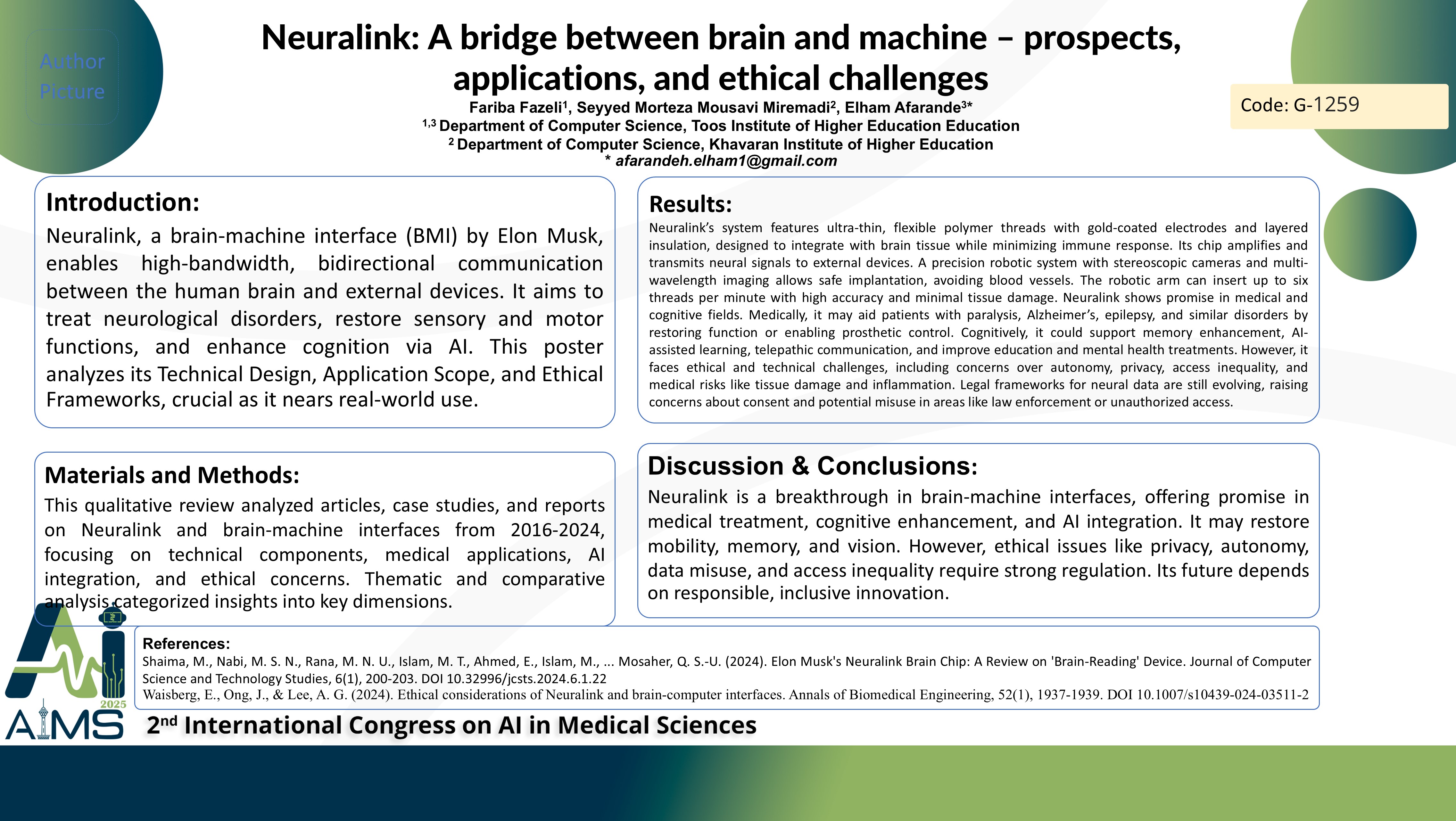Neuralink پلی میان مغز و ماشین – چشم اندازها، کاربر دها، و چالشهای اخلاقی
کد: G-1259
نویسندگان: Fariba Fazeli ℗, Seyyed Morteza Mousavi Miremadi, Elham Afarandeh *
زمان بندی: زمان بندی نشده!
برچسب: دستگاه های پوشیدنی و کاشتنی
دانلود: دانلود پوستر
خلاصه مقاله:
خلاصه مقاله
Background and aims: The rapid technological development in neural technology and artificial intelligence has impacted a variety of industries, most prominently in medicine and human-machine interfaces. Neuralink, a new brain-machine interface, seeks to build a direct brain-machine bridge, offering potential breakthroughs in neurological therapy, cognitive enhancement, and seamless communication. Nevertheless, its application brings enormous ethical concerns. This study examines Neuralink’s capabilities, its medical applications, future developments, and the social and ethical consequences of its widespread use. Method: This research utilizes a qualitative analysis, including a critical review of academic literature and case studies from reputable sources in both neuroscience and advanced technology. It explores Neuralink’s functionality and chip development, its real-world applications, and the broader ethical implications of its use. By comparing and contrasting scientific advancements with ethical concerns, this study aims to present a balanced perspective on Neuralink’s impact on society. Results: Findings indicate that Neuralink has the potential to significantly improve human life by treating neurological disorders such as paralysis, epilepsy, and neurodegenerative diseases. Additionally, it could enable telepathic communication, enhance cognitive function, and bridge the gap between human intelligence and artificial intelligence. However, significant ethical concerns have emerged, including risks to patient autonomy, privacy intrusions, data security vulnerabilities, and social inequalities in access to neural enhancement technologies. Conclusion: The study emphasizes the need for a balanced approach to neural technology development, ensuring that scientific progress aligns with ethical principles. While Neuralink presents groundbreaking opportunities, its successful implementation requires stringent regulatory oversight, ethical guidelines, and equitable access. Neural technology has the potential to redefine human capabilities, but neglecting ethical considerations may lead to unforeseen consequences. Future research should prioritize the establishment of legal frameworks and address societal concerns to ensure that this technology benefits humanity as a whole.
کلمات کلیدی
Artificial Intelligence, Medicine, Neuralink, Neural Implants
